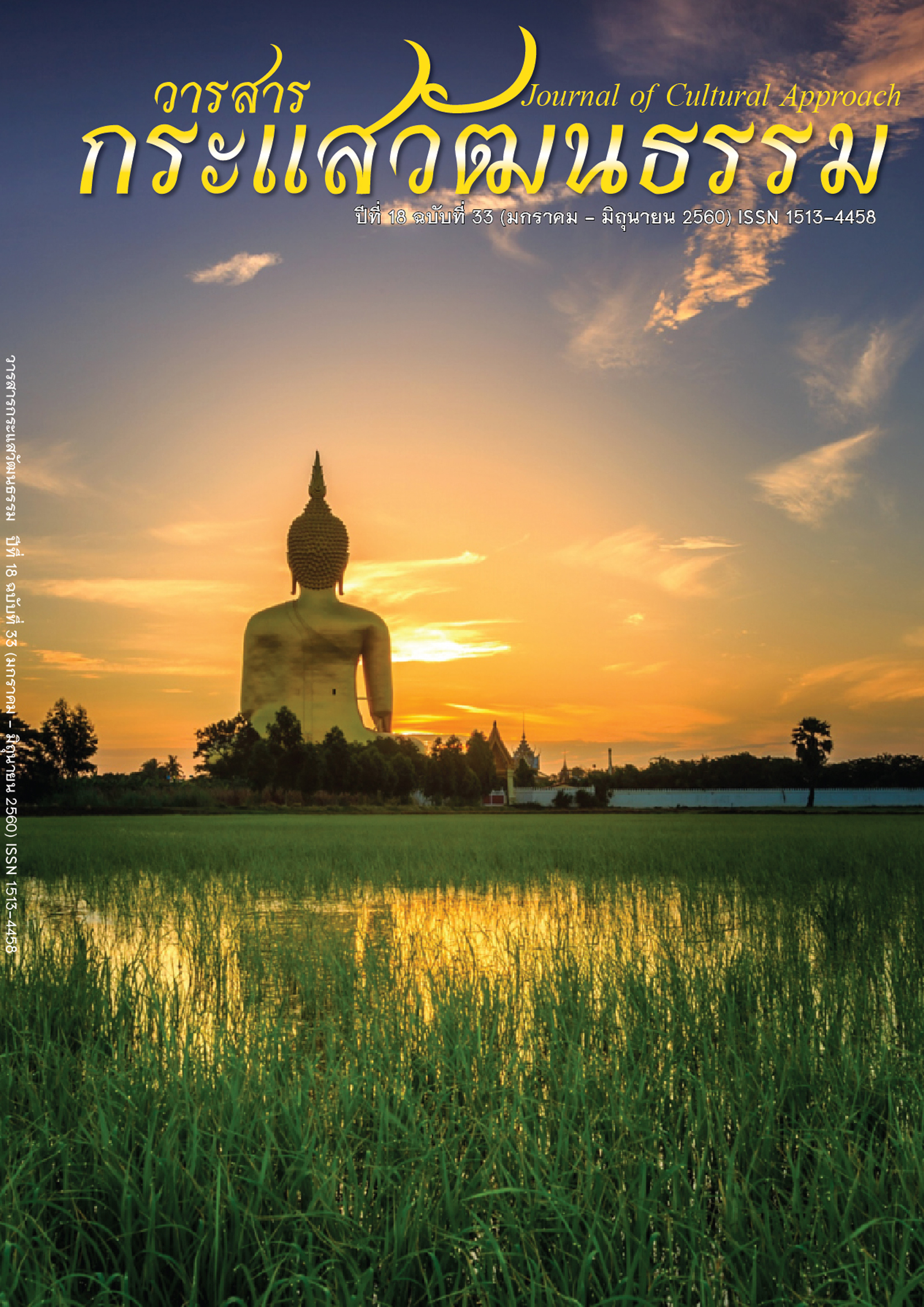Thatsana Nataya Chatri Dance : A Creative Conservation Process of Performing Arts for Competition
Main Article Content
Abstract
The research on Thatsana Nataya Chatri Dance: A Creative Conservation Process of Performing Arts for Competition was aimed at 1) to study the creative process of performing arts for competition; 2) to devise the creative process of performing arts for competition; and 3) to apply the process for the competition. The study was conducted using the qualitative research method in Bangkok (Thailand) through documentary study and data from field observations, interviews and focus group meetings. Data were collected from 50 informants consisting of 10 experts on the subject, 30 practitioners and 10 general information providers. The data collection instruments consisted of participatory and non-participatory forms, structured and non-structured interview schedules and focus group note forms. The data were verified by the triangulation technique and presented using the descriptive analysis. The results of the study reveal that the creative conservation process of performing arts should be initiated by those who have experienced using a prior knowledge in the pursuit of new knowledge. The new knowledge is combined to generate creative work with the conservation process in 8 aspects: a study of format and regulations of the competition, a study of basic information on performing arts, defining the performance format, a fieldwork to acquire an in-depth information, the data analysis, design of performing arts, performance rehearsals and presentation. Inventing the conservation process of cultural performing arts Thatsana Nataya Chatri dance consists of 33 dance postures and 14 transformed patterns. The performance requires 6 dancers, 3 males and 3 females. Costume features both male and female classical and modified dancer’s costumes. The duration of the show takes 5 minutes. As for the application for the competition, this creative work has been selected by Dramatic Works Association (Thailand) to represent Thailand at the Lombok International Dance Sports Festival 2015 held in Lombok, Indonesia. The team has been awarded the Second Place in the Traditional Dance category.
Article Details
Proposed Creative Commons Copyright Notices
1. Proposed Policy for Journals That Offer Open Access
Authors who publish with this journal agree to the following terms:
- Authors retain copyright and grant the journal right of first publication with the work simultaneously licensed under a Creative Commons Attribution License that allows others to share the work with an acknowledgement of the work's authorship and initial publication in this journal.
- Authors are able to enter into separate, additional contractual arrangements for the non-exclusive distribution of the journal's published version of the work (e.g., post it to an institutional repository or publish it in a book), with an acknowledgement of its initial publication in this journal.
- Authors are permitted and encouraged to post their work online (e.g., in institutional repositories or on their website) prior to and during the submission process, as it can lead to productive exchanges, as well as earlier and greater citation of published work (See The Effect of Open Access).
Proposed Policy for Journals That Offer Delayed Open Access
Authors who publish with this journal agree to the following terms:
- Authors retain copyright and grant the journal right of first publication, with the work [SPECIFY PERIOD OF TIME] after publication simultaneously licensed under a Creative Commons Attribution License that allows others to share the work with an acknowledgement of the work's authorship and initial publication in this journal.
- Authors are able to enter into separate, additional contractual arrangements for the non-exclusive distribution of the journal's published version of the work (e.g., post it to an institutional repository or publish it in a book), with an acknowledgement of its initial publication in this journal.
- Authors are permitted and encouraged to post their work online (e.g., in institutional repositories or on their website) prior to and during the submission process, as it can lead to productive exchanges, as well as earlier and greater citation of published work (See The Effect of Open Access).
References
[2] Chandrakasem Rajabhat University. (2010). Aesthetics in Life. 2nd Ed. Nonthaburi: Muaeng Aksorn.
[3] Koontz, H., O’Donnell, C. & Weihrich, H. (1968). Essentials of Management. 3rd ed. New Delhi: TATA Mc Graw-hill.
[4] Iamsakun, Chanthana. (2010). Thai Creative Dance Arts. Bangkok: Thammasat University.
[5] Ngarmying, Dusittorn. (2014). Mon Dance: Creating Standards to Continue the Performing Arts of Thai - Raman. Asian Culture and History, 7(1), 29-34.
[6] Ngarmying, Dusittorn. (2017, April 7). Thasananattayachatri Dance. Retrieved from https://www.youtube.com/watch?v=XMPkltF6LIg.
[7] Puangsamlee, Pratin. (1971). Dance Principles. 4th Ed. Bangkok: Thai Mit Printing.
[8] Virolrak, Surapone. (2004). Principle of Dance Performance Show. Bangkok: Dansutha Printing.


